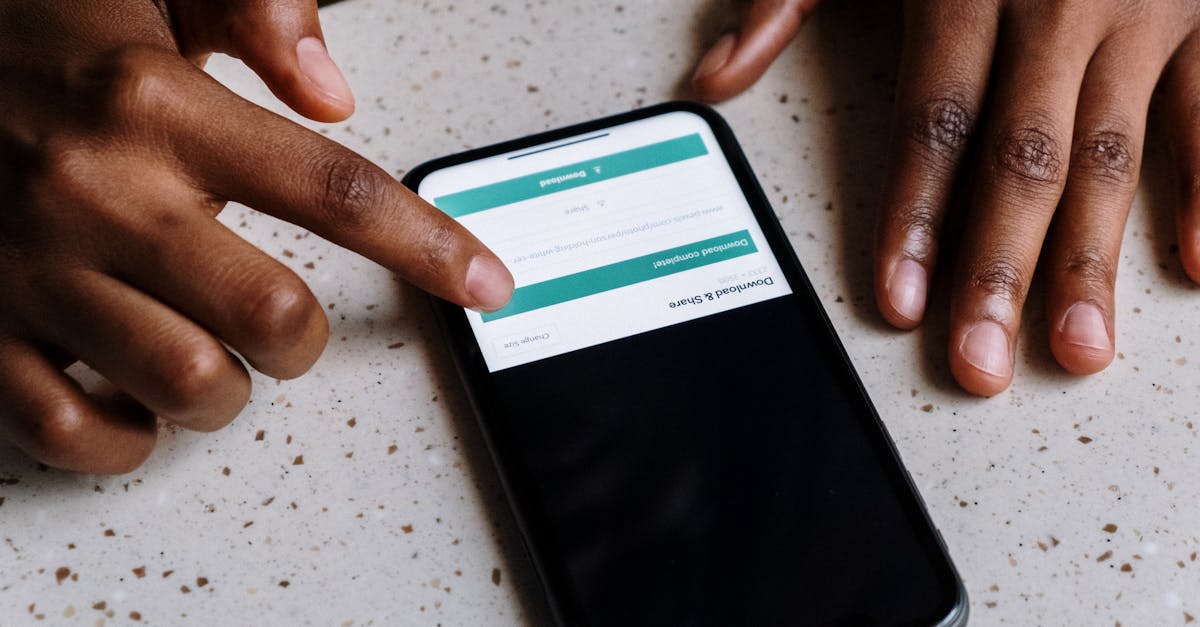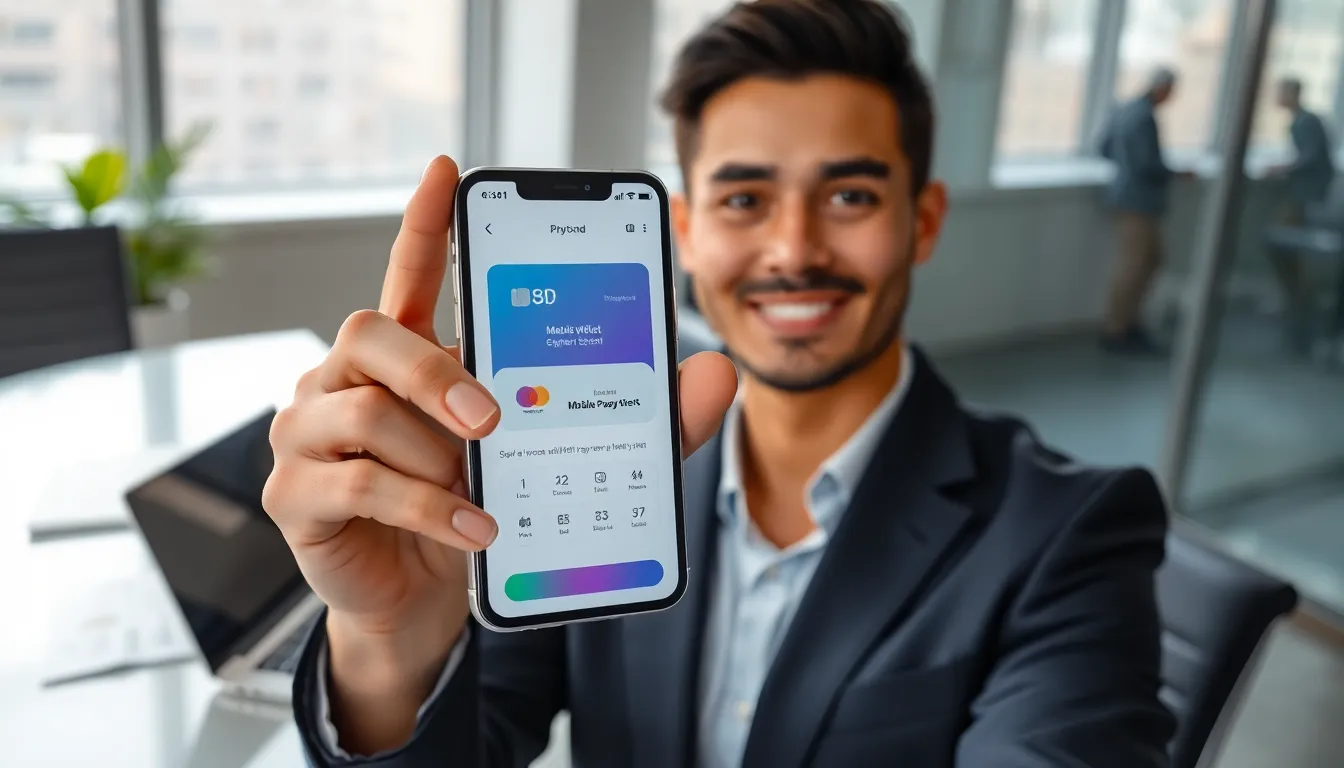In a world where everyone’s glued to their screens, the mobile user experience can make or break an app or website. Picture this: you’re on the go, trying to order a pizza, and your app freezes like it’s stuck in a time warp. Frustrating, right? That’s why understanding mobile user experience isn’t just a nice-to-have; it’s a must-have for anyone wanting to keep users happy and engaged.
Mobile devices have become extensions of ourselves, so optimizing their experience is crucial. A seamless interface, quick loading times, and intuitive navigation are the holy grails of mobile design. When done right, it’s like a warm hug for users—comforting and inviting. Dive into the essentials of mobile user experience and discover how to turn your app into a user’s best friend, one swipe at a time.
Table of Contents
ToggleUnderstanding Mobile User Experience
Mobile user experience (UX) focuses on how users interact with mobile devices. It encompasses every aspect of the user’s journey, from app launch to completion of tasks.
Definition of Mobile User Experience
Mobile user experience defines how well a user can navigate and interact with mobile applications and websites. It includes usability, accessibility, and overall satisfaction. Positive user experiences often result from intuitive designs and effective navigation. Responsive layouts and visual clarity contribute to seamless interactions. Users expect speed and efficiency, with minimal effort required to achieve their goals.
Importance of Mobile User Experience
Mobile user experience plays a crucial role in user retention and engagement. Improved UX leads to lower bounce rates and higher conversion rates. Users prefer apps that load quickly and function smoothly, especially in competitive markets. Positive experiences foster brand loyalty, encouraging users to return. Statistics show that 88% of users are unlikely to return to a website after a bad experience. Prioritizing mobile UX can directly impact a company’s bottom line, promoting growth and success in the digital landscape.
Key Components of Mobile User Experience
Mobile user experience hinges on several crucial components. These elements collectively enhance user satisfaction and engagement.
Usability
Usability drives how easily people can navigate a mobile app or website. The design should prioritize intuitive interactions, allowing users to achieve their goals without confusion. Clarity in buttons and touch targets can significantly improve usability. Testing with real users identifies common pain points and helps address them promptly. According to research, 70% of users abandon an app after one poor experience, showcasing the need for a user-friendly design.
Design and Aesthetics
Design and aesthetics play a vital role in attracting users and retaining their interest. A visually appealing interface fosters positive emotions, promoting longer engagement sessions. Consistency in color schemes, typography, and iconography enhances brand identity and usability. Dynamically responsive designs cater to various screen sizes, ensuring smooth experiences across devices. Studies show that 94% of first impressions are design-related, underscoring the importance of aesthetics in mobile UX.
Performance and Speed
Performance and speed significantly impact user satisfaction. Slow-loading apps frustrate users and lead to higher bounce rates. According to data, 53% of mobile users abandon a site if it takes more than three seconds to load. Optimizing images, minimizing code, and leveraging caching techniques improve load times. Ensuring seamless functionality creates a more enjoyable experience, prompting users to return. Prioritizing these performance factors is essential for mobile user retention.
Strategies for Enhancing Mobile User Experience
Enhancing mobile user experience requires a focus on specific strategies that address user needs effectively. Key principles and practices exist to optimize engagement and satisfaction.
User-Centered Design Principles
User-centered design principles prioritize the user’s needs at every development stage. This approach ensures that applications are intuitive and tailored to user preferences. Research indicates that 70% of users abandon an app after one poor experience. Addressing usability during design leads to simplified navigation and faster task completion, crucial for retaining users. Effective user research methods, such as surveys and interviews, facilitate understanding user expectations, enabling more tailored designs.
Testing and Feedback
Rigorous testing and feedback collection play vital roles in refining mobile applications. Implementing usability tests provides direct insight into real user interactions. Gathering feedback through surveys or beta testing offers valuable data on functionality and experience. Staying attentive to user complaints leads to continuous improvement. Statistics show that 88% of users are unlikely to revisit a website after a negative experience. Regular iterations based on user feedback foster satisfaction and loyalty, making users more inclined to use the app.
Accessibility Considerations
Accessibility considerations ensure all users can interact with mobile applications effectively. Adopting inclusive design practices caters to a broader audience, including individuals with disabilities. Implementing screen readers, voice commands, and adjustable font sizes significantly enhances usability. According to recent statistics, 15% of the global population experiences some form of disability. Prioritizing accessibility broadens reach, ultimately increasing user engagement and satisfaction while fostering an inclusive digital environment.
Popular Tools for Improving Mobile User Experience
Various tools exist to enhance mobile user experience, focusing on analytics, design, and usability testing.
Analytics Tools
Analytics tools track user behavior, providing valuable insights into how individuals interact with mobile apps and websites. Programs like Google Analytics and Mixpanel offer robust statistics on user engagement, session duration, and click patterns. Data derived from these tools helps identify pain points, enabling developers to make informed adjustments. For instance, knowing that 88% of users leave after a negative experience emphasizes the need for accurate tracking. Thus, leveraging analytics ensures improvements align with user expectations and enhance satisfaction.
Design Tools
Design tools play a crucial role in creating engaging mobile interfaces. Apps like Adobe XD and Sketch enable designers to craft intuitive layouts, focusing on aesthetics and functionality. These tools support collaboration, allowing teams to create prototypes and streamline feedback processes. With research indicating that 94% of first impressions relate to design, employing high-quality design tools becomes essential. Improved aesthetics directly correlate with user retention, urging developers to prioritize attractive, user-friendly interfaces.
Usability Testing Tools
Usability testing tools assess how real users navigate applications, offering insights into their experiences. Platforms like UserTesting and Lookback enable developers to observe user interactions and gather feedback on usability. This process highlights issues that may lead to user abandonment, as 70% of users may exit after one negative encounter. By using effective usability testing tools, teams can identify areas for improvement. Regular testing not only fosters satisfaction but also nurtures long-term loyalty and retention.
Mobile user experience is no longer optional; it’s a necessity for success in the digital landscape. Companies that prioritize seamless navigation and fast performance will see higher user retention and engagement. By focusing on user-centered design and incorporating feedback, developers can create applications that not only meet but exceed user expectations.
Investing in mobile UX translates to tangible benefits such as lower bounce rates and increased conversions. With the right tools and strategies in place, organizations can foster brand loyalty and create a lasting impression. As mobile technology continues to evolve, staying ahead in user experience will be key to thriving in a competitive market.





